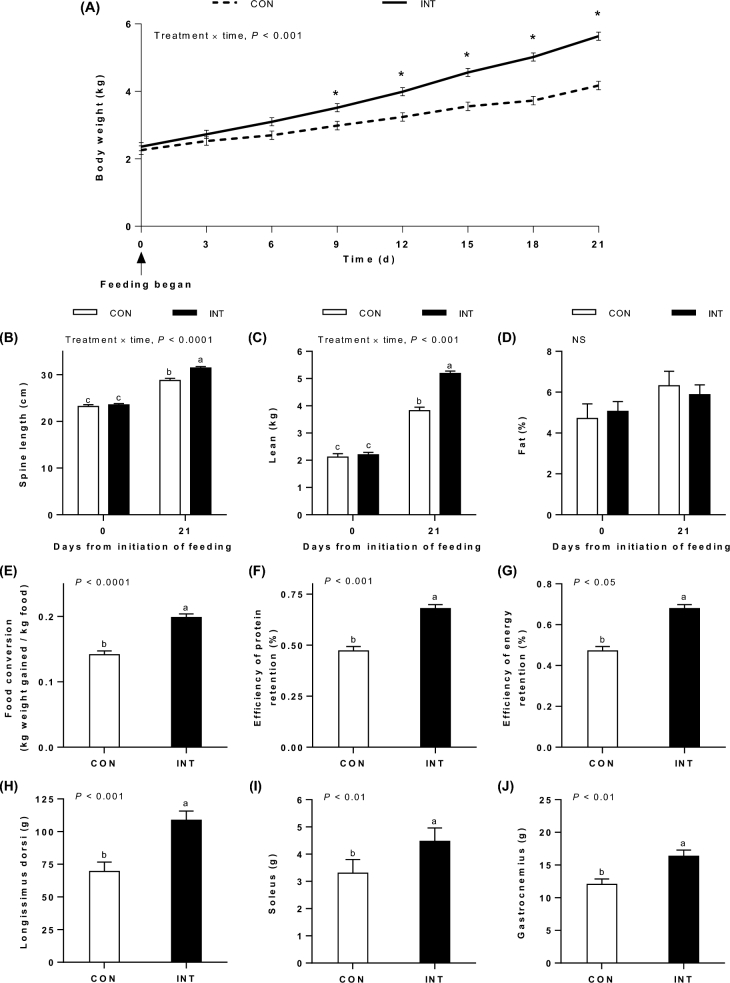FIGURE 1.
Growth and efficiency of nutrient deposition. Body weight (A) over the 21-d feeding period; spine length (B), lean mass (C), and percentage of fat (D) by dual X-ray absorptiometry at 0 and 21 d; food conversion (E); efficiency of protein retention (F) and efficiency of energy retention (G) integrated over the 21-d feeding period; and longissimus dorsi muscle mass (H), soleus muscle mass (I), and gastrocnemius muscle mass (J) after 21 d of feeding neonatal pigs either continuously or intermittently. Values are means ± SEMs; n = 6 (CON) and 12 (INT). “INT” represents INT-0 and INT-60 data that were pooled because these groups were treated identically from the start of the study until the time these data were obtained. Spine length and body composition at the start (day 0) and end (day 21) of the feeding period were inferred from dual X-ray absorptiometry measurements at days –3 and 18, respectively, as described in Methods. Statistical analyses were conducted by using mixed-model repeated-measures ANOVA. When a significant effect was detected, all means were compared using a Tukey-Kramer post hoc test. *Body weight of INT pigs differed from that of CON pigs, P ≤ 0.001. Means without a common letter differ significantly. CON, continuously fed; INT, intermittently fed; INT-0, intermittently fed just before a meal; INT-60, intermittently fed 60 min after a meal.

